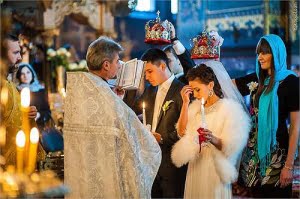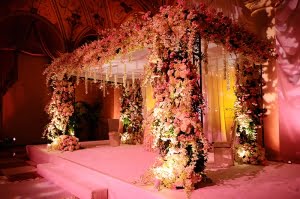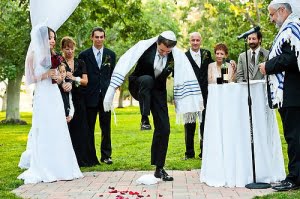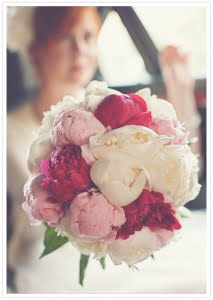A few weeks ago I published a blog based on cultural wedding traditions. Well I am now going to write another blog based on three different cultural values. I find it fascinating the way other cultures celebrate marriage. While reading about other cultures it’s as if I could picture everything, and imagine being there. It would be great to be a part of a cultural wedding and experience it firsthand.
In Russia when they celebrate marriage they do not celebrate for one night. They celebrate for at least two days, sometimes even a week. The first day of celebrating the ring exchange is done. To Russians, two golden rings are a symbol of marriage, so it is likely you will see this on wedding invitations. There is a ton of food and drinks along with dancing, singing, and long toasts.
Russian weddings have recently adopted some western traditions such as a bridesmaids. When the groom arrives at the bride’s house he must pay a ransom for the bride. The whole event is played in a comical sense, the bride’s parents then present a women or a man covered with a veil to “resemble” the bride. After the groom soon realizes that this is not his bride he asks for her. He then will have to pay a bigger ransom to get his bride.
There are two parts to a Russian wedding, there is the Betrothal and the Crowning, and this is taken place in a church. The Betrothal is taken place to bless the couple, the bride and groom stand in the entrance of the church and are given a candle each. The deacon leads a litany lead with a special petition for the couple. The priest says the final prayers and the rings are placed on the couple’s right hand, and blesses the couple’s betrothal.
The crowing is the part of the ceremony that is the most important. In the Eastern Orthodox Church Holy Matrimony is a sacrament and marriage is not represented by a ring but crowing the happy couple is.
After the betrothal the priest brings the bride and groom to the center of the room where they stand on a rose colored fabric which represents their entry into a new life. This is where the bride and groom confess that they are marrying in their own free will and not to one another. After more prayers the crowns are held above their heads by the wedding party. Readings from Epistle and Gospel, ektenias, brief prayers and then sharing of a “common cup” of wine by the bride and groom.
The bride and groom are led by the priest around an analogion where the gospel book has been placed. The priest has wrapped his epitrachelion around the couple’s hands, this process symbolizes the pilgrimage of their soon wedded life together. The bride and groom once had to wear their crowns for 8 days straight, but now they are removed after the ceremony.
After the traditional ceremony a civil ceremony must be taken place. It is done at a public service department known as ZAGS. Here the couple is met by their family with bread and salt. During the ceremony the parents offer the married couple two crystal glasses where they then must break. The more shards there are the better chances they have of creating a long and happy life together.
The ceremony takes about 30 min long and that is when they are officially pronounced husband and wife. The finale of the wedding is concluded with the couple releasing balloons or white doves to symbolize their partnership and love to one another. A balloon is released with the bride’s maiden name on it to symbolize her new life ahead of her.
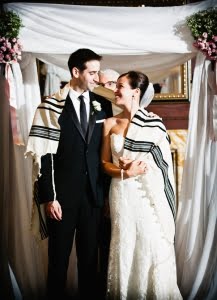
In the Jewish community when it is time to get married, there are multiple requirements that must be met. As most cultures you would not want to have your wedding on a day that you should be mourning someone’s death. When that sudden mourning period takes place they post-pone the wedding for at least 30 days, or longer.
But in the Jewish community you cannot get married on the Sabbath, Rosh Hashanah, Yom Kippur, Passover Shavuot, and Sukkoth. The three weeks between the 17th of Tamuz and the 9th of Av, which falls in July or August, are off limits, and also the Omer period which usually falls in April or May. As soon as the bride and groom get engaged they must go to the Rabbi and check for date availability. This is a very important part in the marriage process because they must be advised properly to what date they can get married on. The time for the ceremony is completely optional. Most weddings have been done on Sundays or even Saturdays after sundown.
When it comes to inviting their guests and wedding invites, the invitations have two sides on them. One side in Hebrew and one side in English. On the invitations, unlike traditional American invites, they do not “request your honor of your presence” but to “dance at” or “share the joy of.” When issuing the invitations they are done by the parents or by the bride and groom and this is a way of asking for the participation of the guests.
As far as the bride wearing white for her wedding day she wears it to symbolize that she has been to the Mikvah in preparation for the wedding. The wedding is considered a personal Yom Kippur and wearing white is for “spiritual pureness.”
Today when couples get married most often they sign prenuptial agreements, in Jewish traditions they sign something similar called the Ketuba. The Ketuba is a contract that is signed by the bridegroom to protect the bride if she were to become widowed or divorced. When it is being signed there are two other witnesses, this is a tradition that still goes on but it does not have any legal significance. Now the bride and groom frame the agreement and it is hung in their home and the bride now owns the agreement.
After the Ketuba is signed then the ceremony occurs. The bridegroom and his men are led to the bride’s chamber by the Rabbi. This is where the veil is placed over the brides face and the ceremony is ready to being. The grandparents walk first and sit on the left or right side for brides side and bridegrooms side. If the ceremony is done in a synagogue or temple the Rabbi is next, followed by the grooms men. They stand next to the Chuppah which is a canopy. It can be held by four men or supported by poles, it resembles a house of which the bride and groom will spend their lives together, it is held over the couple during the ceremony.
The bridegroom is escorted by his parents and then follows the bridesmaids, matron of honor, flower girl, ring bearer, and the bride escorted by her parents. After her parents give their love to the bride the groom steps down from the Chuppah and escorts her under with him. The Rabbit then reads from the Ketuba in Hebrew and English. When the rings are exchanged they must be of solid gold no diamonds.
In the conclusion to the wedding ceremony the Rabbi requests the best man to place a wine glass covered in a white cloth where the bridegroom breaks it to symbolize the destruction of the temple in Jerusalem, showing how short life can be and how fragile it truly is. Once this is broken all the guests shout Mozel Tov, clap, and depart. Once declared man and wife they run into the Yichud to spend a few moments with each other before joining the party.
The couple is introduced as man and wife and showered with rice and they enjoy the evening by celebrating, making toasts, and enjoying some wonderful Kosher foods.
In Italy the wedding traditions are done differently, before the groom proposes to the bride he must serenade her and then present a diamond ring. The reason a diamond ring is presented is because they have a belief that the diamond was created by the flames of love. The weddings usually fall on Sundays because it is said to be the luckiest day of the week. When a bride wears green the day before the wedding it can bring more luck to the couple but if she wears gold on the day of the wedding or before it is bad luck.

Before the wedding the bride and groom are given several challenges to test how their marriage will turn out. In Northern Italy the groom presents the bride with the bouquet he has chosen, he picks the flowers and the color of the flowers and presents it to the bride as his gift to her.
To start the party strong drinks are served and toasts are made. “Per Cent’anni” means “100 years”, “Evviva gli sposi” means “Hurray for Newlyweds”, and “kiss the bride” is shouted so the couple can show their affection. During the Reception the bride carries a Satin pouch where guests hand envelopes of money for a chance to dance with the bride, and they dance the traditional Tarantella known as the dance of the spider. It involves quick movements and passionate hand gestures.
Food is extremely important is the Italian weddings, they serve up to 14 courses and then have cake! Candy-coated Jordan Almonds are handed out in quantities of 5 or 7 which are goodluck numbers, and these represent the bittersweet moments of marriage. After the wedding the bride and groom break a vase and the amount of pieces there are will show how many years they will remain together. Just like previous cultures I have spoken about the guests will sneak away and prank the bride and groom, a famous one is placing itching powder all over their bed. For the bride to thank the guests for attending, she hand bakes items as her thank you notes.
So as you can see many cultures have unique qualities to their weddings to make them memorable. Boat Miami has hosted some very beautiful cultural weddings on a few of our yachts. So if you feel like you want to add some extra pizazz to your cultural wedding hosting your wedding on a yacht is the way to go. We work with many different venues to create the perfect wedding for any bride and groom.

